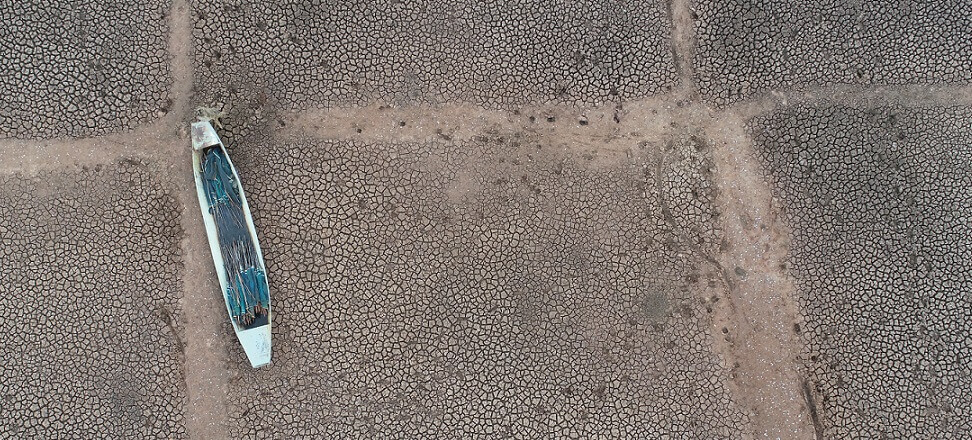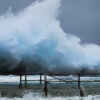Issue 14/2024, News
Rusanda Lake has dried up. Does a similar fate await other saltwater bodies of water?
The drought that is afflicting the entire Balkans is changing the geographic map of the region. Popular throughout Serbia, the salt lake Rusanda has completely dried up. According to Serbian media reports, this is a huge disappointment for tourists who visited the place for therapeutic baths. Unfortunately, meteorologists warn that this could be the future in many regions of the world.
Hot and dry
The heat wave in the Balkans this week is reaching its zenith, with temperatures hovering around 40°C, bringing with it droughts and fires. In Serbia, thermometers in many parts of the country showed 35-37°C on Thursday, rainfall is severely lacking. Water levels in major rivers are constantly falling. Forecasts from the Serbian Hydrometeorological Service (RHMZ) predict that the water level in the Danube will drop by up to 50 centimeters by Monday, at the heights of Bezdan, Apatin and Bogojev.
Long-term forecasts are not optimistic – according to the RHMZ, maximum temperatures by the end of August could exceed 34°C, and higher rainfall is not expected. Vladimir Djurdjevic, a meteorologist in Belgard, in an interview with Reuters, admitted that all of Serbia is under the influence of extreme weather, and the current heat wave is unusually long and intense. In his opinion, climate change will make such hot summers recurrent.
According to Djurdevic, water resources are declining because during hot weather people use more water, which is becoming scarce anyway. In many Serbian cities it is already missing from the water supply.
Rusanda Lake – not even a swamp remains
Located in northern Serbia, Rusanda Lake, which is more than 3.5 kilometers long, is known for the healing properties of its salt water and mud. On its shores are spa resorts, restaurants and accommodations that attracted thousands of tourists each year. Salt mud from the lake was used, among other things. As poultices for rheumatic ailments.
The last time Rusanda Lake completely dried up was in 2017, which, as the media emphasized, was an unprecedented event in its history, although not entirely, since, as Dr. Vesna Kicošev explained at the time: the periodic drying up of a significant part of Rusanda’s bed, inherent in the natural dynamics of water movement in the area, is not an ecological disaster, but a natural phenomenon that plays a key role in preserving the peculiarities of the lake and the surrounding pastures. In fact, in the following years the lake began to regenerate as hydrological conditions improved, allowing it to partially fill and restore its original functions.
Unfortunately, recent reports indicate that the lake has dried up again. On the FB profile of Reuters, you can see what Lake Rusanda looks like today. Locals, including Sava Jokovic, recall the extensive wetlands that once surrounded the lake, which have also disappeared. The current situation is a huge challenge for both local businesses and the environment. Lake Rusanda is one of the last soda lakes in Serbia and is an important stop for migratory birds such as the bobcat and the barred owl, whose populations are steadily declining worldwide. Time will tell if and to what extent its natural ecosystem functions will return.
Is the end of the salt lakes approaching?
The problem of drying up saline reservoirs is observed in many parts of the world. We have already written about the Aral Sea, of which two small lakes remain. The Caspian Sea, officially still the largest lake on Earth, located between Kazakhstan and Russia, is also gradually disappearing. According to NASA, by 2030. Its level will drop by a further 8 meters, which will translate into a 25 percent reduction in its area. Scientists are already warning of catastrophic ecological and economic consequences.
Iran’s Urmia Salt Lake is also disappearing at an alarming rate, with its area shrinking by 34.5 percent (1,766 square kilometers) between 1990 and 2020. Its complete disappearance will have serious consequences for the 7.1 million people who make their living growing vegetables and fruit trees. Progressive desertification of the area and salt dust storms are also predicted.
In the United States, however, the famous Great Salt Lake in Utah is under threat – in 2023. Scientists at Brigham Young University have published a frightening forecast that shows it could dry up completely within the next five years. Unsustainable use of water from this largest salt lake in the Western Hemisphere has already left it with only 37 percent. original volume. Climate change and the drought that afflicts the western US every year helped, of course. And in this case, the consequences for the surrounding ecosystems will be dire, plus millions of people will be exposed to the dust rising from the drying bottom.

 Polski
Polski







